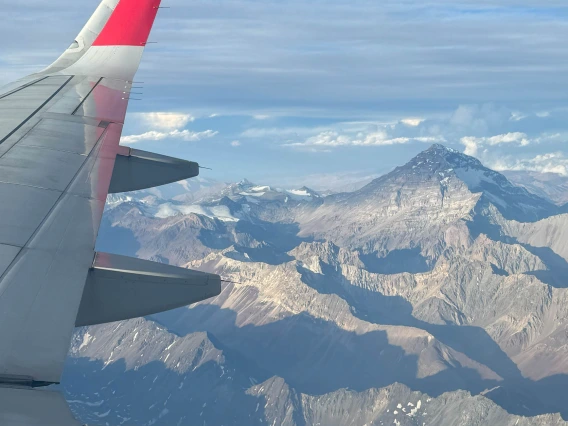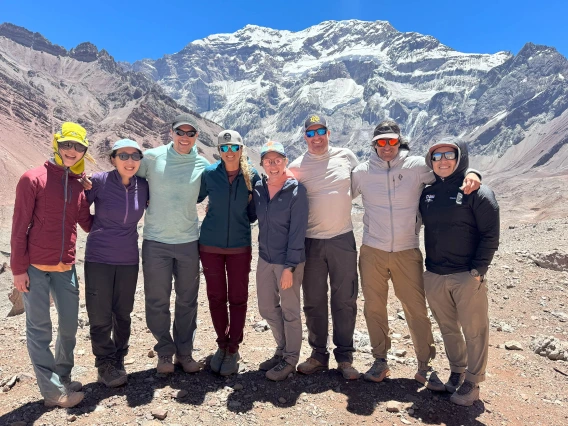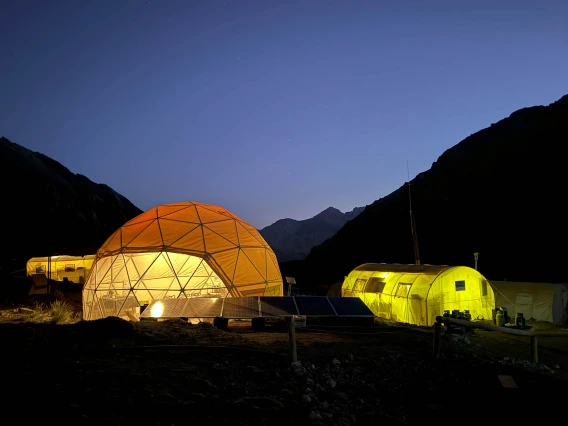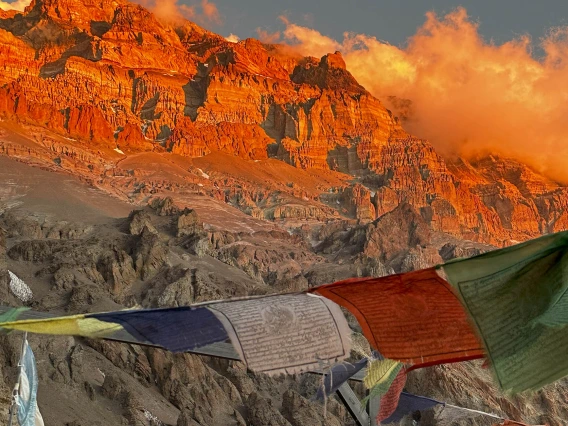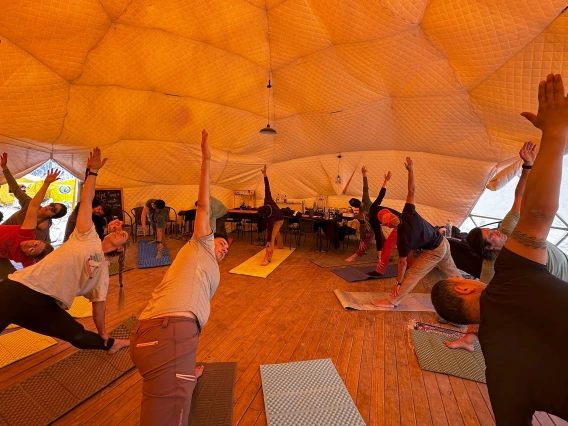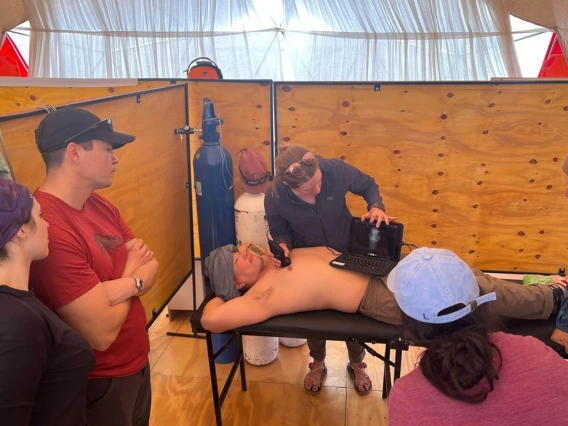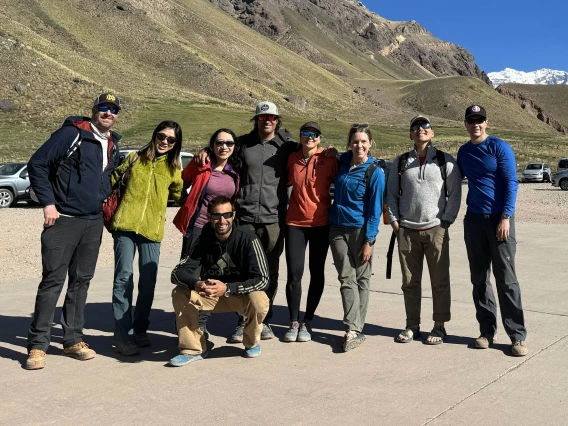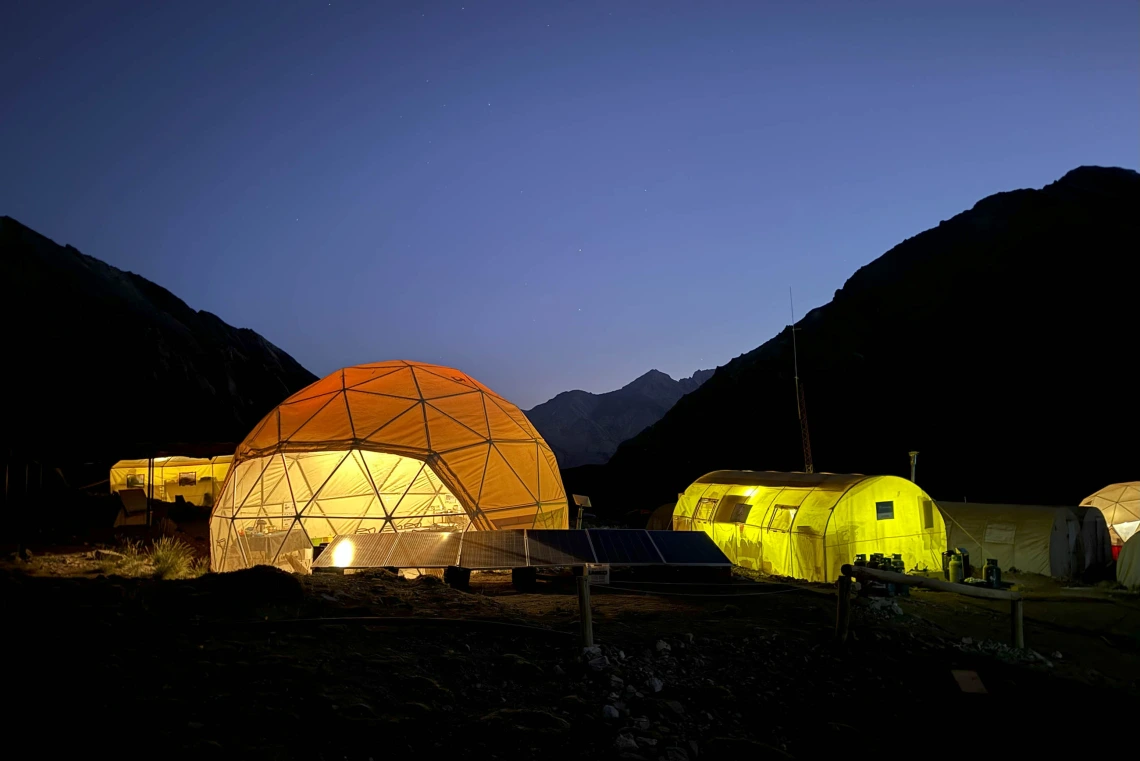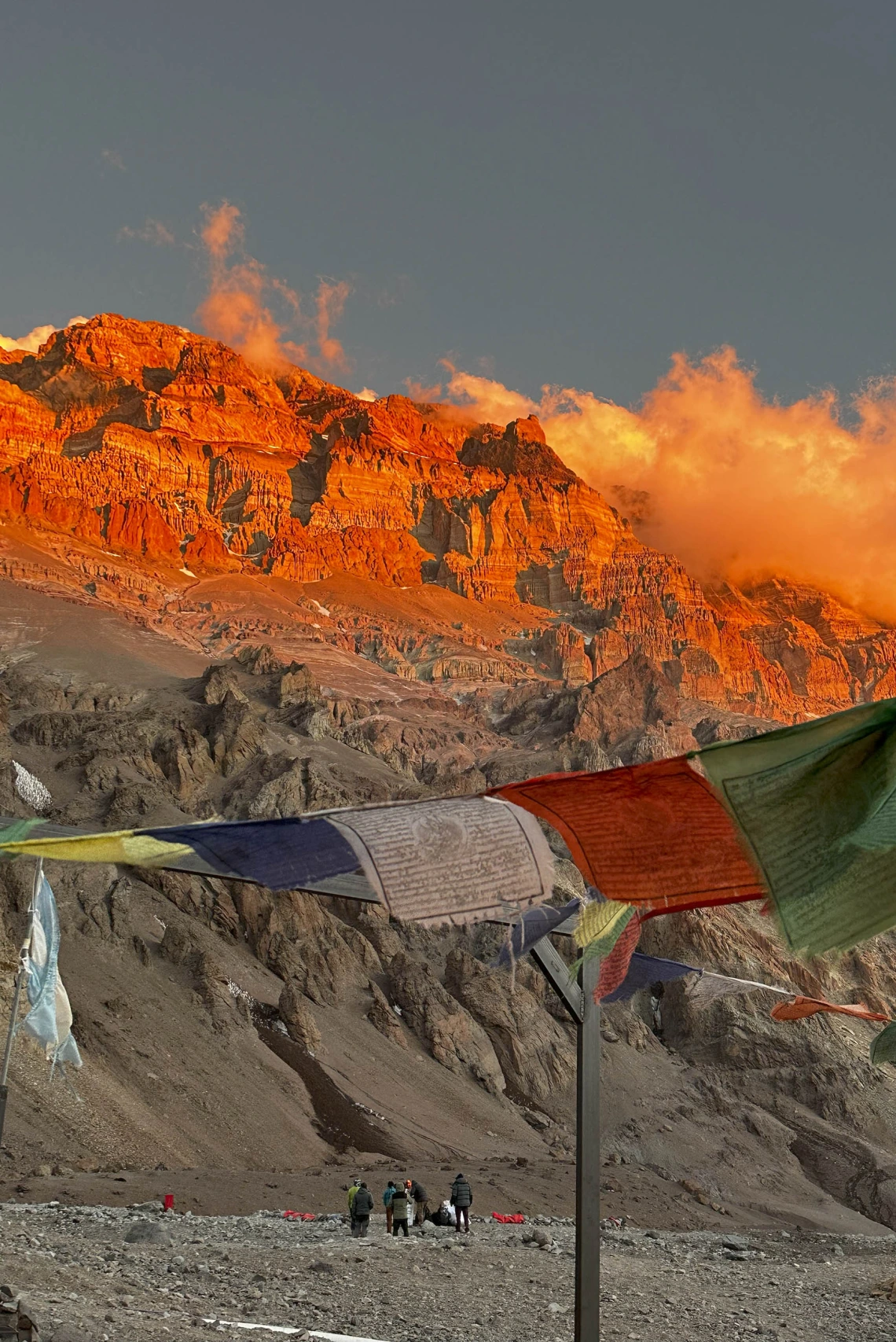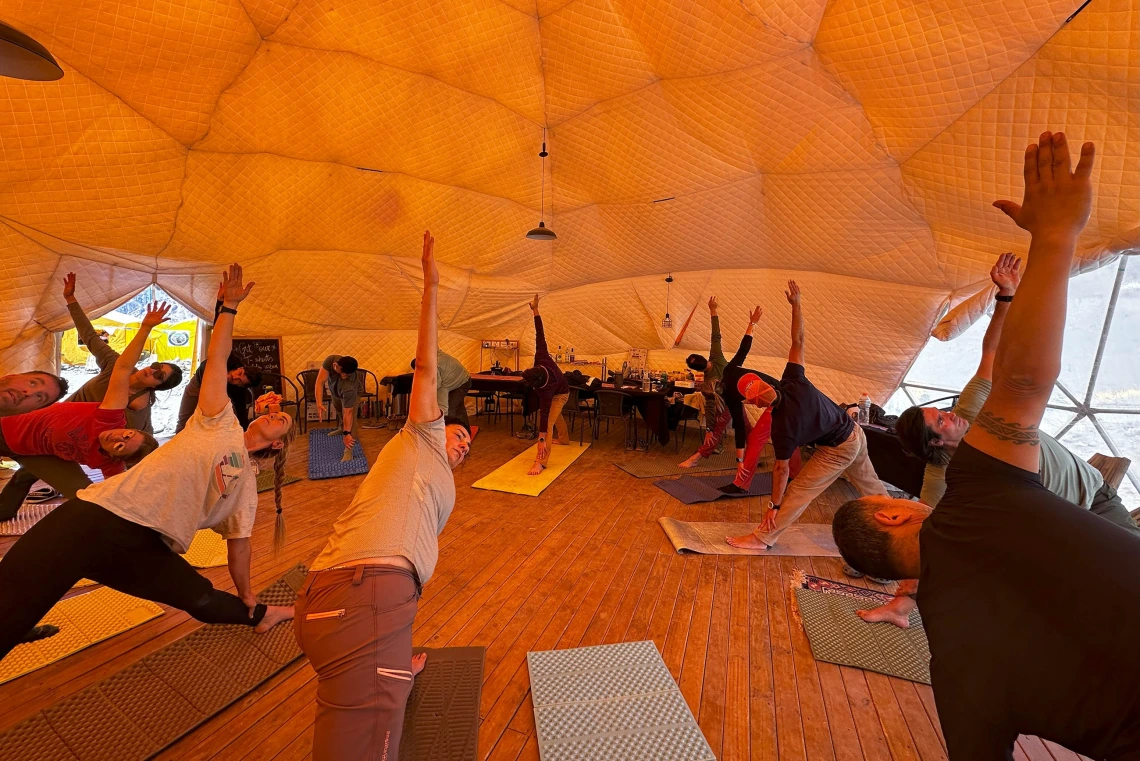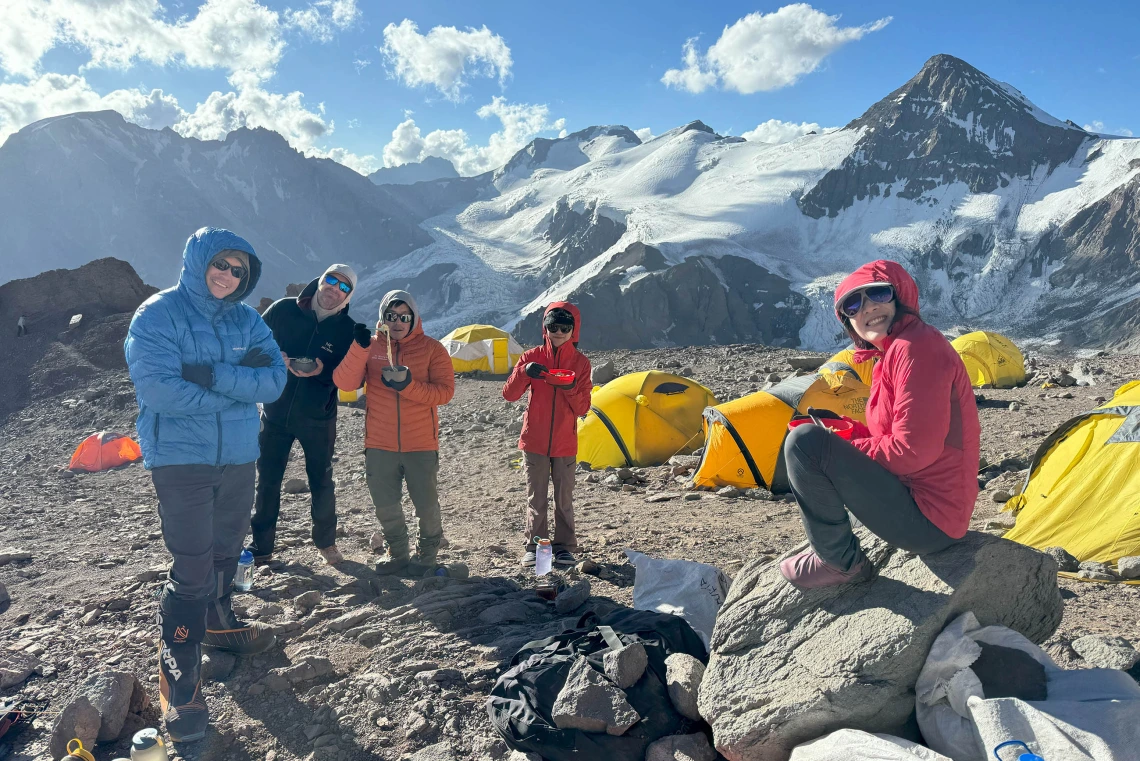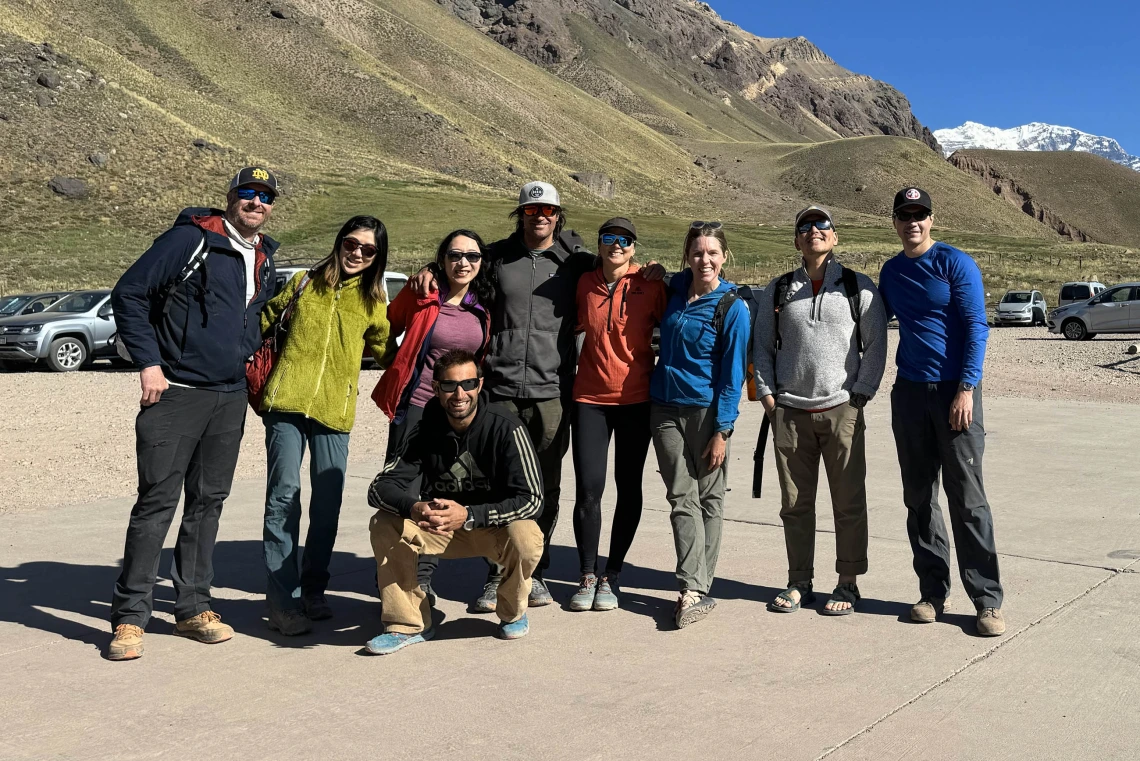Emergency medicine professor reaches new heights in wilderness medicine
Summiting tallest mountain in the Americas showcases assistant professor’s love of medicine and teaching.
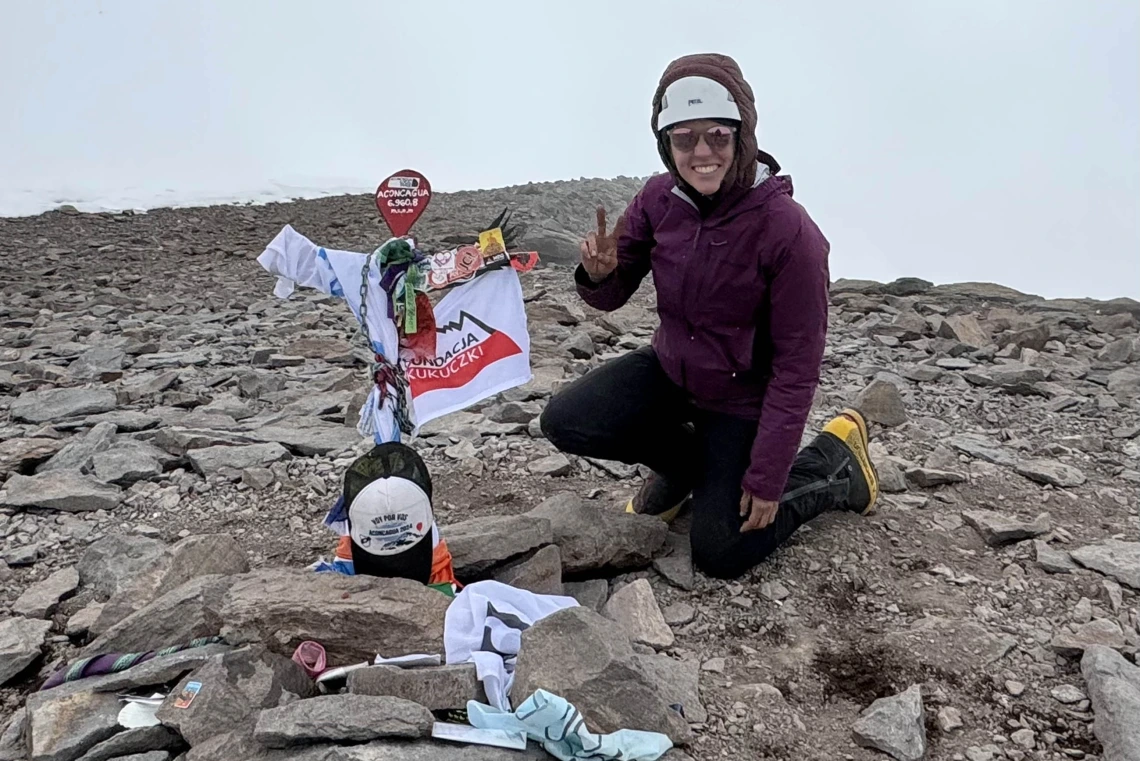
Nicola Baker, MD, a clinical assistant professor at the University of Arizona College of Medicine – Tucson, was part of a team of health care professionals who climbed Aconcagua, the tallest mountain in the Americas, in January. (Courtesy of Myung Bae)
Nicola Baker’s Garmin watch started heckling her.
It fired off this message: “You seem to be training less and it’s starting to impact your training status. Try increasing your training load to see improvement.”
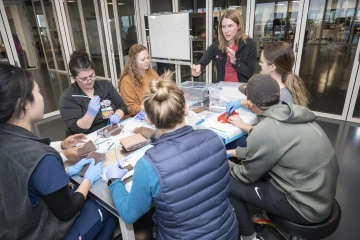
As a young college student, Nicola Baker, MD, participated in an outdoor educational program that hooked her on nature and gave her the desire to be a strong mentor like the ones she encountered.
A little passive aggressive? Sure. But the watch did have a point – Baker had certainly been taking it easy since climbing Aconcagua, the highest mountain in the Americas at 22,837 feet. After spending 12 days ascending to the summit of Aconcagua, Baker and her teammates had celebrated their success with plenty of steak and wine in Mendoza, Argentina. In fact, she might have been taking it too easy, and Baker is not one to take things easy.
Baker, MD, is a clinical assistant professor and emergency medicine physician at University of Arizona College of Medicine – Tucson and is fellowship trained in emergency ultrasound. She is a core faculty member for the University Campus Emergency Medicine residency program and facilitates the clinical-reasoning course for first- and second-year medical students. She is also the medical director and a volunteer rescuer for Southern Arizona Rescue Association. And, oh yeah, she is the mom to a 5-year-old daughter and climbs mountains in her free time.
So back off Garmin watch.
A passion for wilderness medicine
Baker, who graduated from the UArizona College of Medicine – Tucson in 2010, had signed up to climb Aconcagua with Wild Med Adventures, a physician led company that offers continuing medical education trips for health care professionals. A month before Baker departed for Argentina, people kept texting to ask her if she’d seen a New York Times article about an ill-fated 1973 expedition on Aconcagua in which two climbers died.
“Yeah, I didn’t read it,” said Baker.
In fact, while Baker was on Aconcagua, two people died.
Aconcagua is one of the Seven Summits – the highest mountains on each continent. Given its popularity and extreme altitude, the incidence of acute mountain sickness, high altitude pulmonary edema and high altitude cerebral edema on Aconcagua is high. The climbing team was learning how to prevent and treat emergencies at altitude.
The helicopter comes and goes from base camp with an unnerving frequency. While Baker and her team prepped to move to higher camps, 135 climbers had attempted the summit and 10 rescues were undertaken to evacuate patients with HAPE and HACE off the mountain. That added immediate relevancy to the wilderness medicine topics the team was studying.
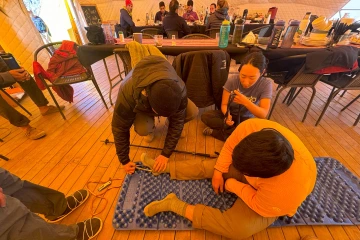
The team took part in wilderness medicine classes such as building an improvised femoral traction splint. (Courtesy of Nicola Baker)
“I really like wilderness medicine because you can close the knowledge gap,” said Baker, who completed the Academy of Wilderness Medicine’s fellowship program in 2018 and the internationally recognized Diploma in Mountain Medicine last year. “There’s going to be objective risk no matter what, but by becoming an expert in wilderness medicine, you are armed with the information that you need to make the right decisions.”
For Baker, this trip offered exciting ways to reconnect with her profession all over again.
“I love my job, but there’s a high burnout rate in emergency medicine,” Baker said. “I always tell our residents that you have to find ways to keep your interest in your career. For me, wilderness medicine absolutely does that. I’m always reinvigorated by wilderness medicine expeditions, and I come back a better teacher.”
Baker and her group met and collaborated with physicians from Extreme Medicine, the elite Argentinean team that provides medical care and rescue services on Aconcagua. Baker taught a session at the base camp medical tent focusing on the use of portable ultrasound in expedition medicine and at extreme altitudes.
They also participated in a (literally) “shocking” research study at base camp that examined the effects of altitude on peripheral nerves using electromyography.
Baker doesn’t hide her excitement about wilderness medicine. She is an active member of the Wilderness Medical Society, a professional organization that drives innovation and research in the field. Baker hopes to start a GME wilderness medicine fellowship at Banner – University Medical Center Tucson so she can train the next generation of wilderness medicine experts.
Discovering the outdoors, becoming an educator
Baker was born in England into a decidedly indoorsy family. As a 20-year-old college student Baker saw a flyer for Outward Bound, a nonprofit educational organization that offers outdoor programs for youths and adults. She ended up with a scholarship for a 30-day course in the San Juan Mountains in southwestern Colorado – and a newfound love of nature.
“It obviously got me hooked on pursuing life outdoors,” Baker said.
“The whole thing was just a dream.”
Nicola Baker, MD
She loved the non-traditional classroom and came away with a life-changing appreciation for the supportive mentors she encountered.
“I left the course with a personal mission to become the type of educator that I had just witnessed,” Baker said.
While completing a post-baccalaureate premedical program at Johns Hopkins University, Baker became an instructor in their outdoor rec program. Next she was off to southern Chile for a semester-long mountaineering and sea kayaking course with National Outdoor Leadership School.
Before starting medical school, Baker became a wilderness EMT and worked as a ski patroller, wilderness guide and outdoor educator, all while hiking and rock climbing as much as she could. Baker casually lists mountains she’s summitted like she’s naming days of the week – Cotopaxi, Grand Teton, Mount Rainier, Mount Shasta.
At UArizona College of Medicine – Tucson, Baker co-teaches a two-week wilderness medicine course with Chris Williams, MD, and Vivienne Ng, MD.
A fine line
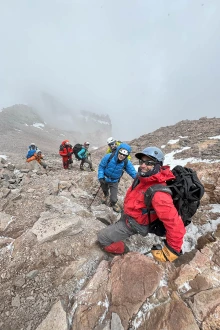
Nicola Baker’s team lucked out with good weather on the day it pushed toward the summit. (Courtesy of Nicola Baker)
Baker recognizes she does some fairly dangerous things, including her work as a rope rescue technician with Southern Arizona Rescue Association. However, she avoids unnecessary risks.
“If there’s an option to get in a helicopter or walk, I usually walk because I’m a mom,” said Baker.
So how does she reconcile that with a journey to Aconcagua, which is nicknamed “The Mountain of Death?”
“Going into this trip, I was asking myself, ‘Where’s the line?’” Baker said. “I don’t want my kid to think small. The example I want to set for her is to go and embrace your passion. But it was tough. You ask yourself, is this worth my life? I think the only way to make it palatable is to tell yourself that that’s not going to happen to you.”
One of Baker’s highlights was on the summit when the team – though winded at nearly 23,000 feet – performed a dance of “El Meneaito,” a throwback to a hit throughout South and Central American in the early ’90s. They spent 35 minutes at the top of Aconcagua before heading back down safely off the mountain.
“The whole thing was just a dream,” said Baker, who’s already introduced her daughter to hiking and rock-climbing at a local gym.
So, what creature comfort did Baker miss most?
“Flip-flops,” she said, smiling and without hesitation. “It’s hard for a Tucson gal to wear boots.”


